FiiO K13 R2R Desktop HIFI DAC AMP Review – Call Of Musical Resistor Arrays
FiiO K13 is a $319 USD desktop DAC / Headphone Amplifier with an R2R DAC at the heart, with a fully differential 24 Bit R2R design, NOs and OS Dual Modes, up to 2400mW per channel headphone driving power, and with LDAC Bluetooth support, and even including AC / DC dual power modes. Today we will review FiiO K13 and also compare it with other desktop DAC AMPs including Topping DX5 II (299 USD), Shanling EH2 (369 USD) and HIFIMAN EF499 (299 USD).

Introduction
FiiO needs no introduction and this is not even their first R2R DAC, but what needs introduction is their crowning achievement of having designed some of the most popular DACs of this year, including our favorite FiiO K17, which is a reference in our studio. FiiO products are available on Amazon, Aliexpress, Hifi sale channels and multiple other locations, sometimes even in electronics shops, best place to get them will be locally, either Amazon in the USA and Europe, or the store that has the best price.
As an Amazon Influencer, I earn from qualifying purchases, and using the purchase links in my reviews helps me maintain this website and Youtube Channel. Huge thanks to FiiO for providing us with the sample for this review.
Product Link
Amazon – https://amzn.to/4ogFg6g
Aliexpress – https://s.click.aliexpress.com/e/_c2Jhss3p
Build Quality – Design
FiiO K13 R2R is powered by the fully differential True 24Bit R2R DAC with Resistor Arrays, a FiiO proprietary four-channel DAC composed of 48 precision thin-film resistors per channel, with a total of 192 resistors across four channels. Each resistor features a 0.1% accuracy and low temperature drift. Ideally, this fully differential architecture leads to lower noise, fewer FFT harmonics and a darker background for your songs.
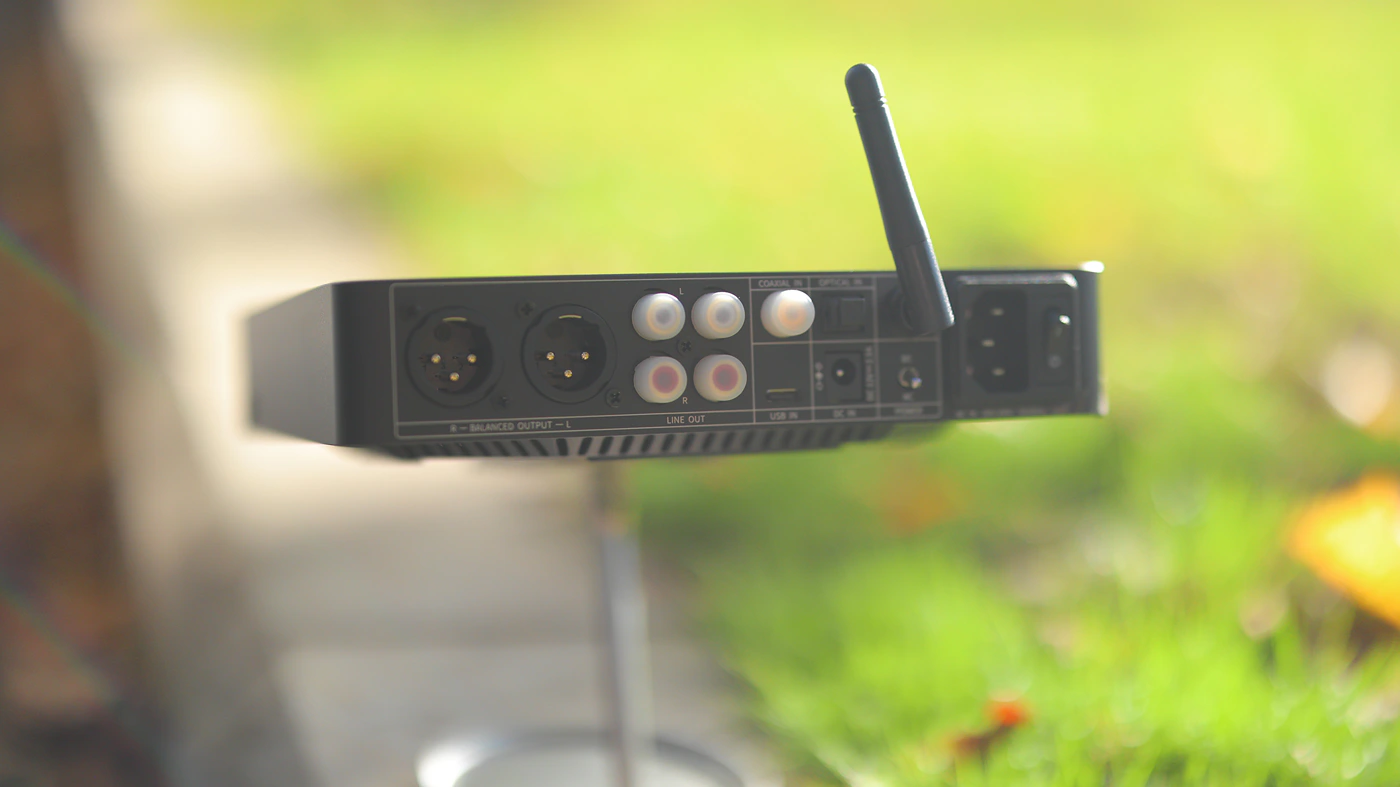
FiiO made sure that K13 will deliver an excellent sound regardless whether you’re interesting in the standard R2R NOS mode or a more traditional OS mode, as it is designed with both in mid. NOS is the original sampling rate for decoding, preserving authentic sound, and the traditional R2R sound, while OS oversamping will upsample the data globally to a high sampling rate of 384 kHz, which will sound more natural if you’re coming from a standard Delta-Sigma DAC.
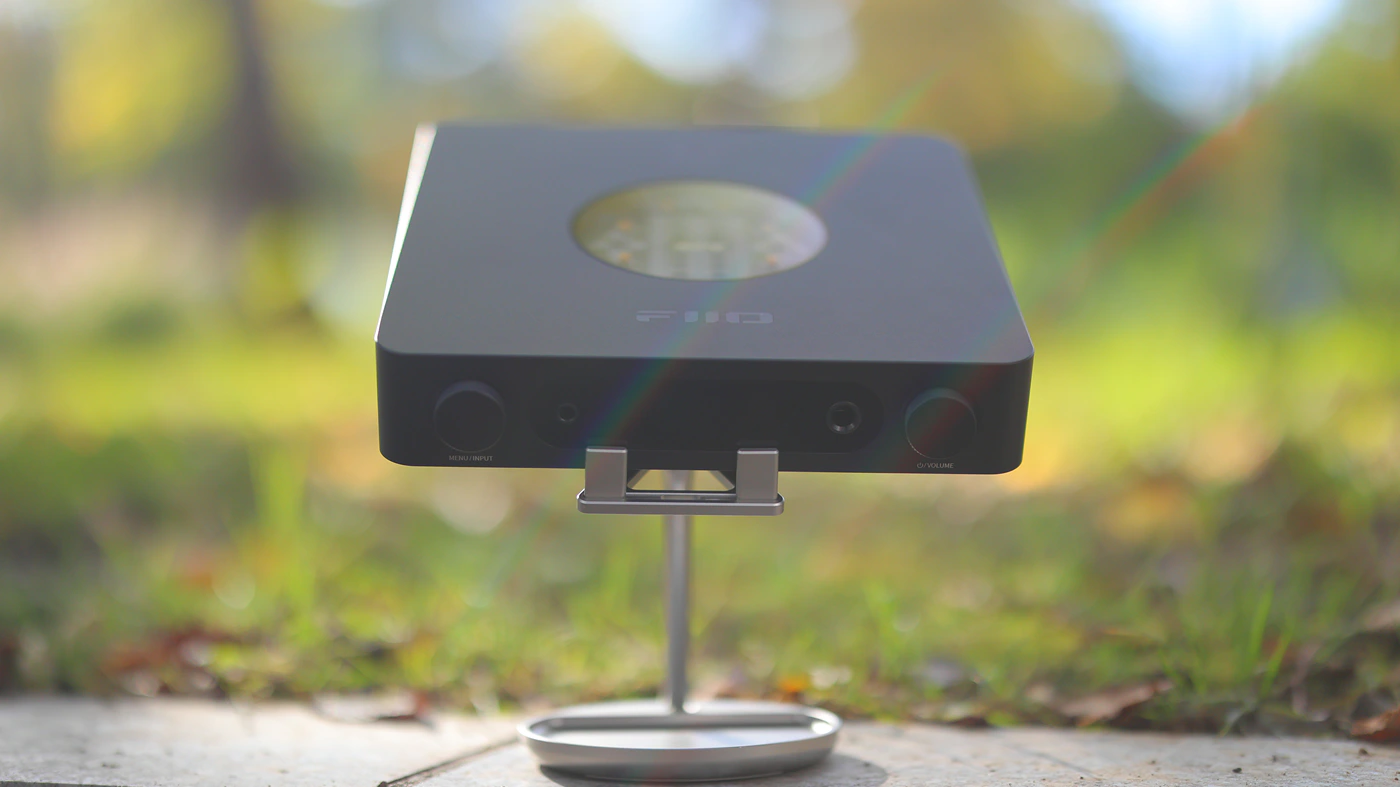
K-13 is versatile, and it can deliver a Preamplifier function, Power Amplifier, and it supports PCM signals up for 384 kHz / 32 Bit and DSD256 for decoding. As it has an XLR Balanced output, and an RCA Single Ended output, K 13 can do a lot for a complex system. With the help of the XMOS XU316 platform, K13 R2R can use a specially developed PEQ, with support for 10 bands, which supports saving EQ curves, sharing them and even auto EQ for effortless tuning.
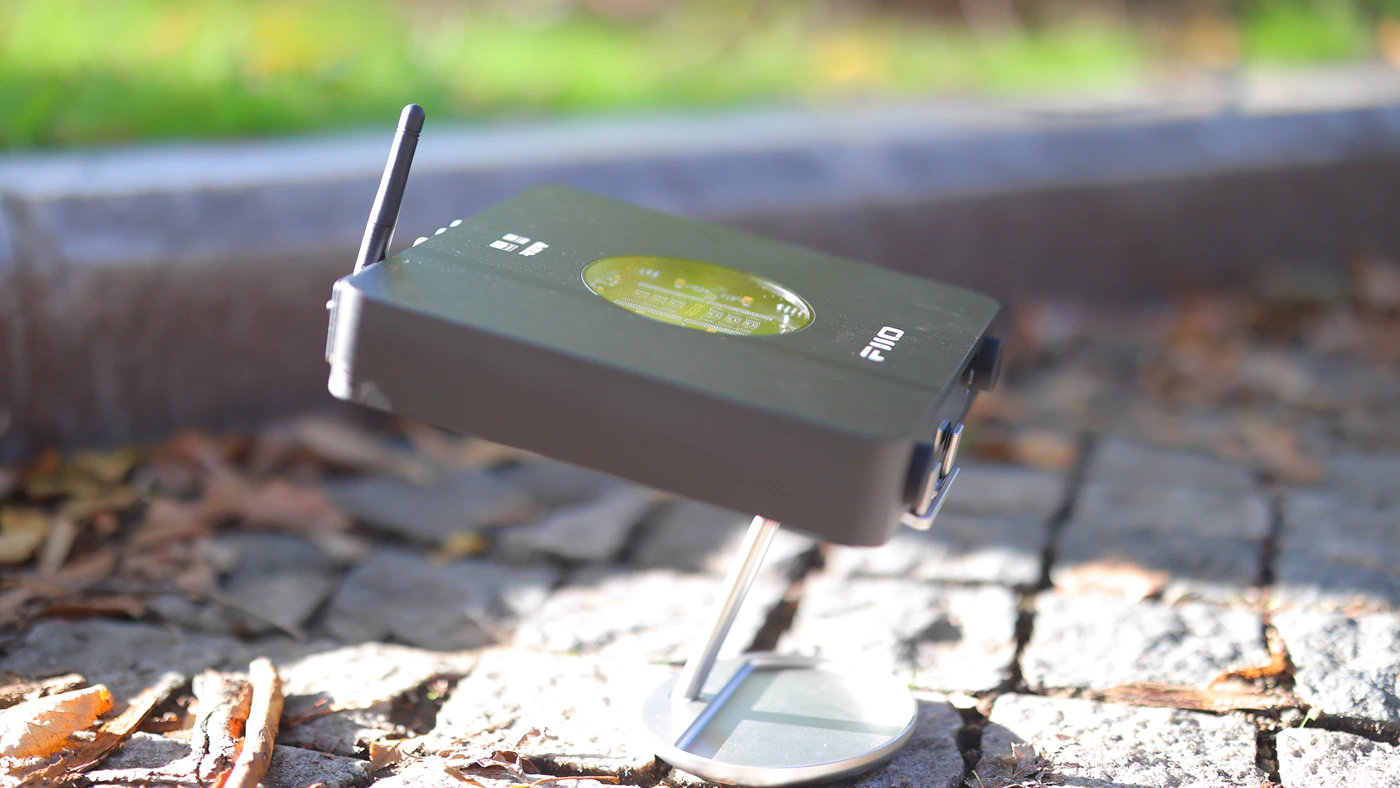
To pair with the fully balanced DAC, K13 comes with a fully balanced audio amplifier circuit, and everything in the audio circuit is fully differential processed, balanced. K13 has a special power supply that provides it with 30W of power. This PSU or Power Supply is protected by an alloy nickel-plated shielding, and you can also connect an external DC power supply to K13 if you own an LPS or Linear Power supply. You can rely a lot on the internal power supply though, as it is a Multi-Rail Power Supply with 19 low-noise LDOs, 5 DC-DC converters in total.
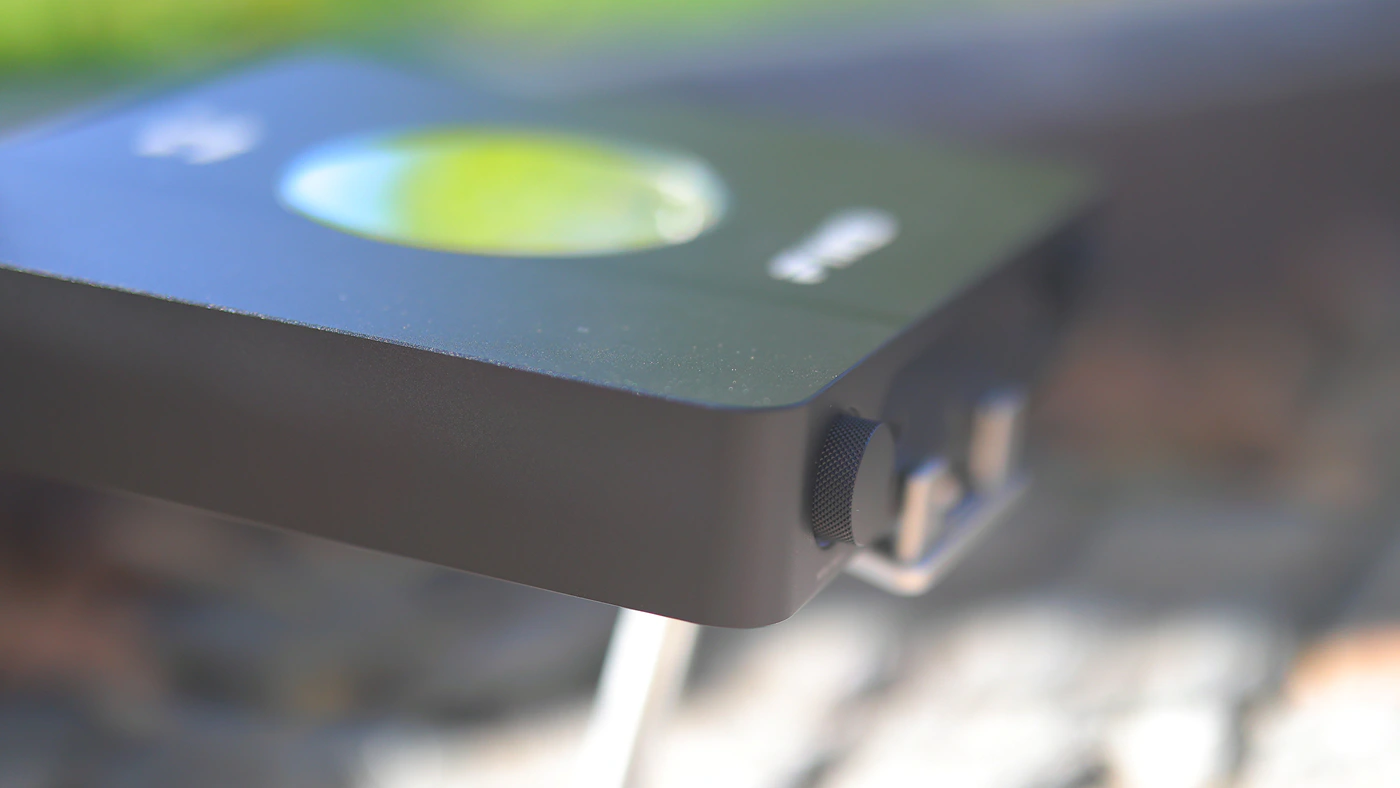
Sonics are powered by high-quality ELNA RA3 audiophile-grade silk-film audio capacitors, and specialized tantalum electrolytic capacitors working together to ensure a pure, stable power supply. The maximum power output of the entire chain is 2400 mW + 2400 mW into a 32 OHM load, as K13 R2r can deliver a ton of power for your headphones, enough theoretically even for HIFIMAN Susvara Unveiled. You can look into the settings and setup of K13 R2r via the high-contrast custom long-lasting HD LCD display that shows the current sampling rate, volume gain and output mode. This can be left on indefinitely without the risk of burn-in. K13 is also compatible with the FiiO Control app, and you can adjust the RGB logo lighting. You can use K13 wirelessly with Bluetooth LDAC, AAC or SBC protocols.
USB DAC – Subjective Usage
At first glance, this has to be one of the most beautiful DAC AMPs I’ve ever seen, and it gives me a kick having that rounded glass panel where you can see the R2R DAC array, and with it being lit up by LED lights that you can change the properties of is just super nice. The two wheels at the front also have LED lights around that can be configured which I like a lot.
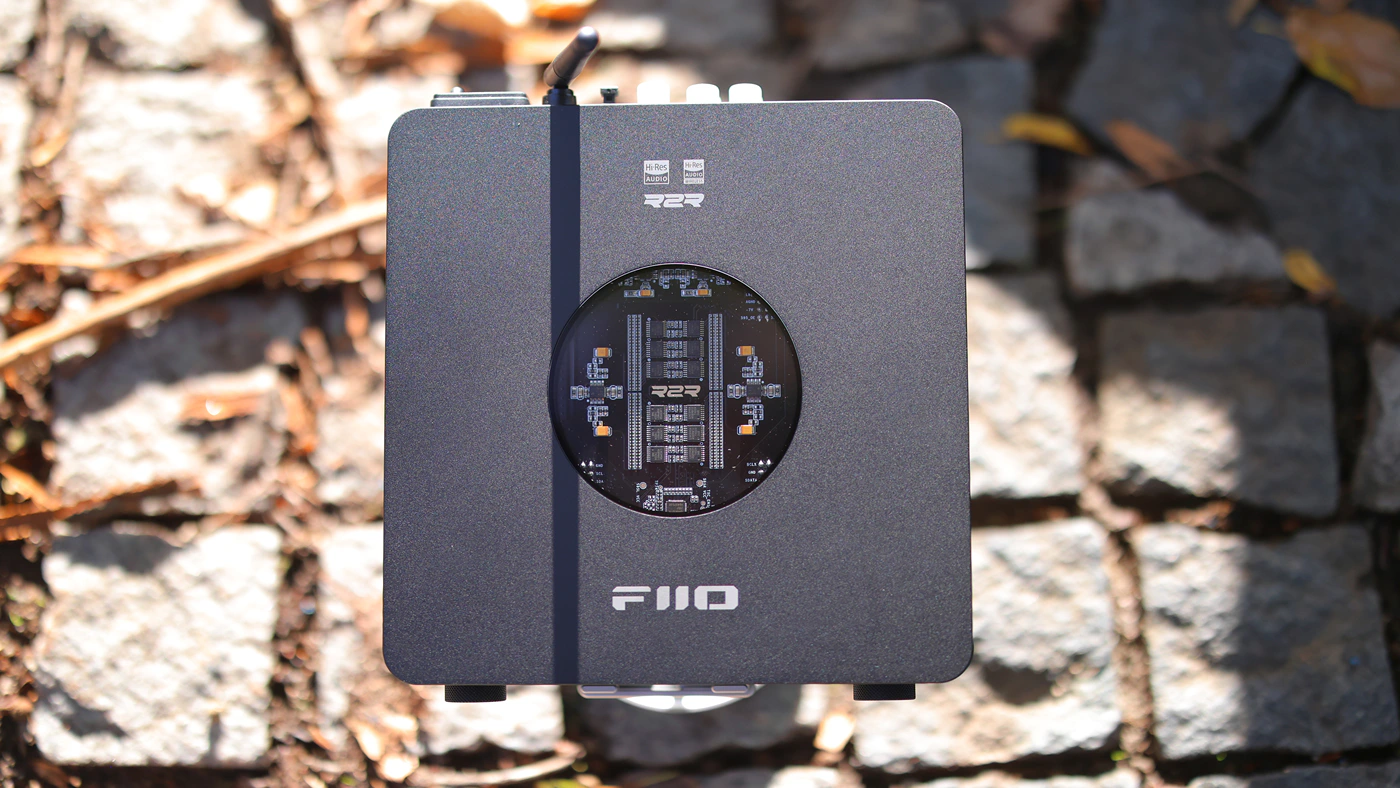
You don’t need a remote for K13, everything is easily configurable from the left wheel, and the right wheel is a volume wheel that you can use to set the volume, but it has a bit of ghosting effect, so if you turn very fast, sometimes it goes + many numbers, and backwards 1 or 2, but that’s not an issue, if you use it gently, you will have a good experience. The tiny display at the front can be set to turn off after a while, stay on, and you can also configure the light power so that it is not intrusive.
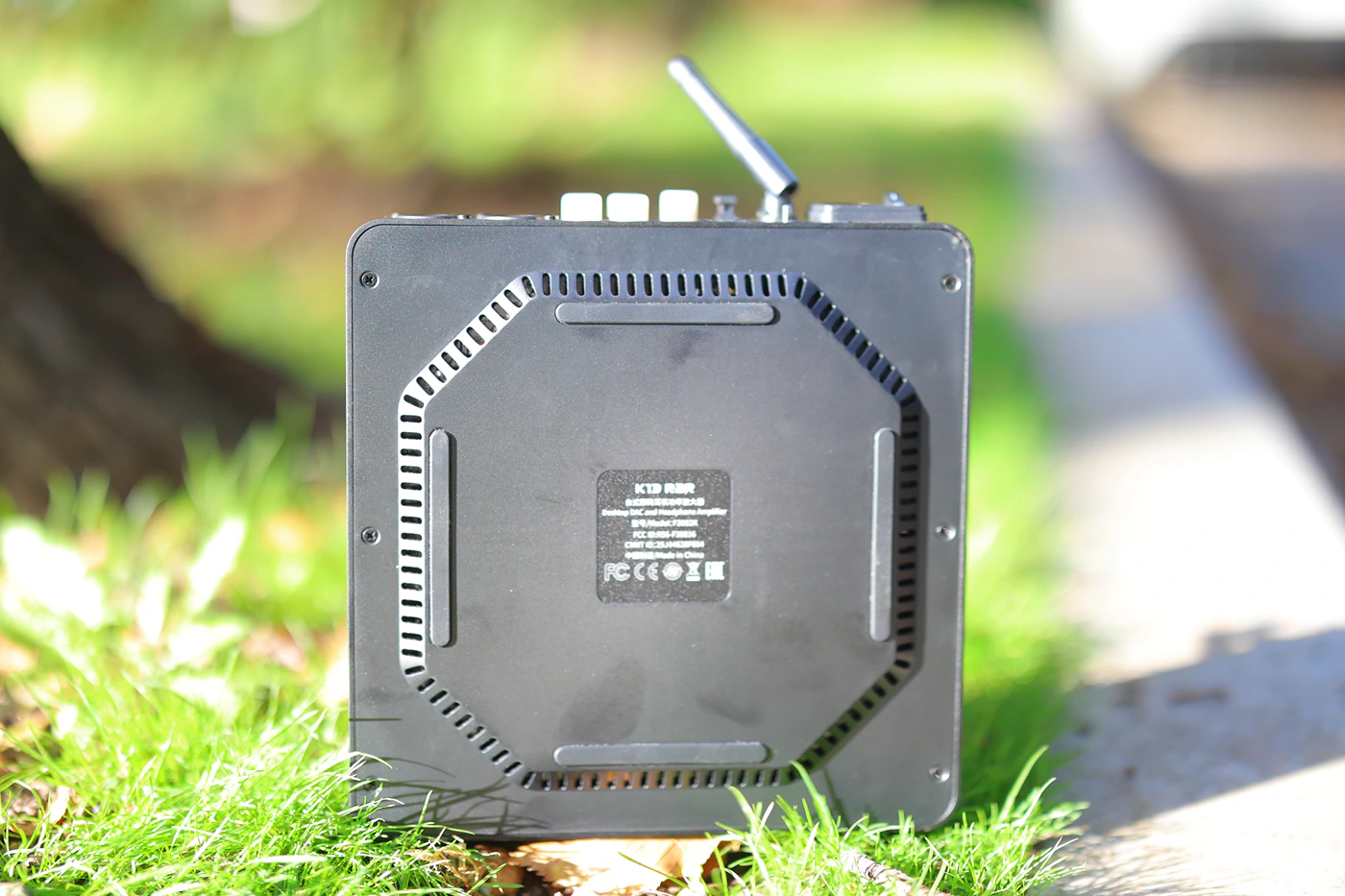
USB DAC function is excellent, it does not have any kind of delay and FiiO K13 R2R is perfectly fit for real-time playback, including watching movies, playing video games or music videos. There is no software error either, and EQ functions work well too, but I usually do not rely a lot on EQ, as the default sound is good already.
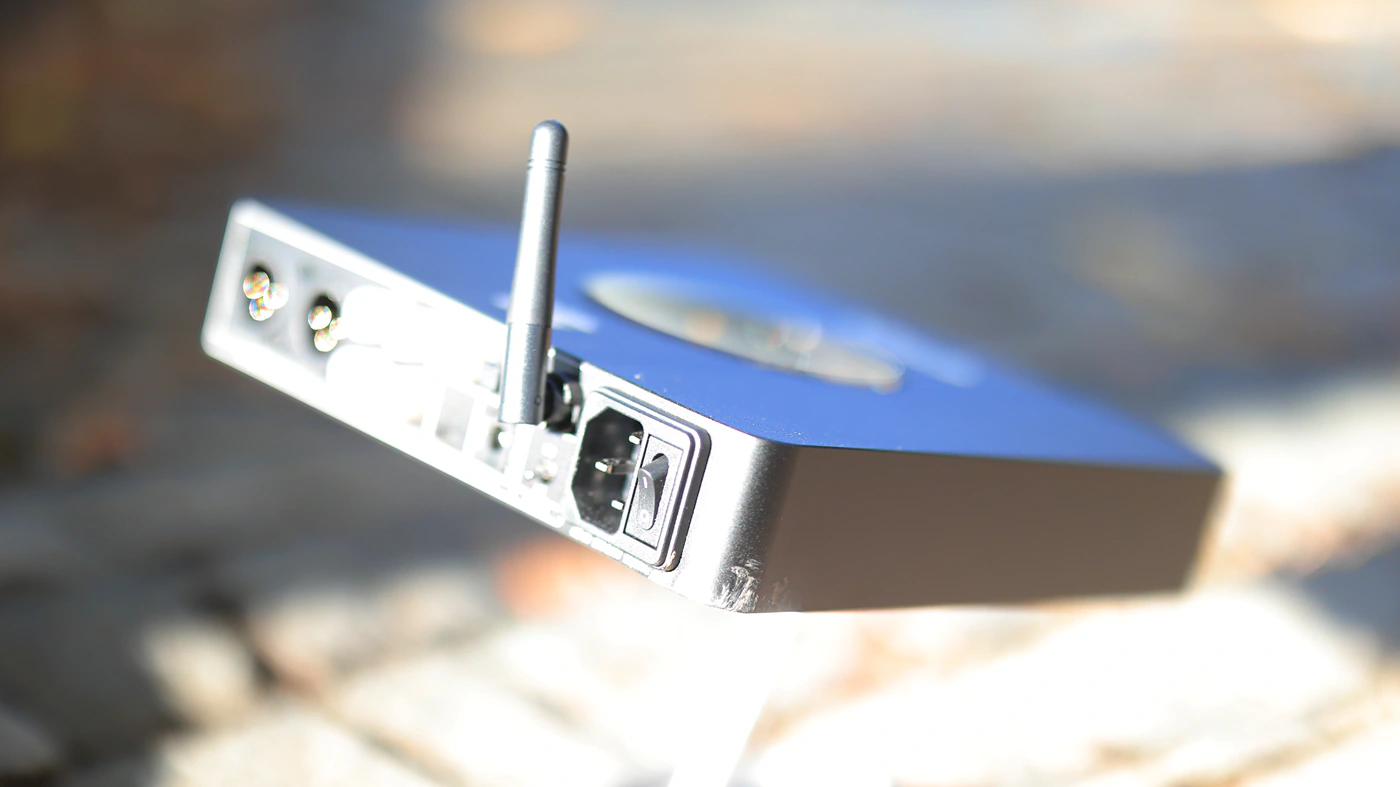
The two headphone outputs at the front are great, and you can select which output is currently being used, with no automatic switching between PO / LO and PRE output. I have used the USB Type-C input at the back, you can use the one on the right if you’re using a phone and want an easier access to K13. XLR PRE and LO have no audible noise and it is generally adequate for all standard functions of a desktop DAC AMP.
Sound Quality
Pairings – I have paired the rather interesting FiiO K13 R2R with a selection of headphones and IEMS, including Raptgo LEAF D01, Palma DHS-1, KBEar Cepheus, Crosszone CZ-10 Enhanced, Erzetich Thalia, Erzetich Mania V2024, TinHIFI T7, FiiO FT13, NFAudio NE4, Sivga Peng, Moritz Dragon, Crosszone CZ-8a Enhanced, Sendy Audio AIVA 2, Tangzu TianPeng, Soundz Flame, YanYin Canon PRO, Dunu Vulkan 2, Letshuoer Mystic 8, and HIFIMAN Isvarna.
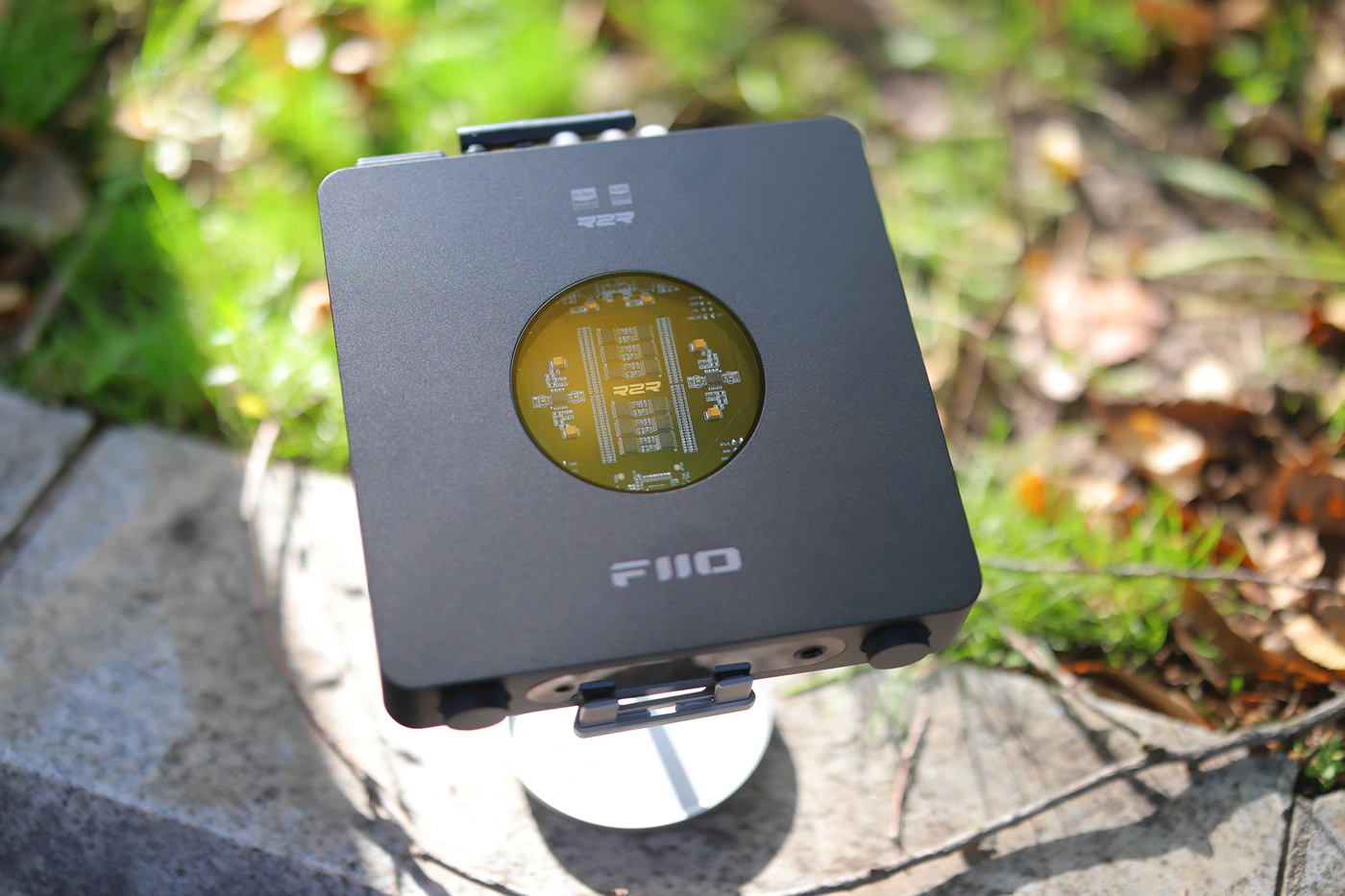
It has more than enough power for most headphones, does a beautifully sounding pairing with HIFIMAN Isvarna, and it just generally has a nice, dynamic and engaging sound. On the other hand, K13 seems to sound better with high gain levels, and I prefer using high gain with both IEMs and Headphones, which is different from K17 , which sounds better on low or medium gain with most headphones and IEMs.

Overall Signature – FiiO K13 is remarkably controlled, with a very low background noise, and a slightly warm midrange sound that has a sharp and brilliant treble, and a wide, holographic soundstage. It is interesting that it has a consistent sound in both NOS and OS modes, it is very consistent across all volumes, and it can pack a punch even with very hard to drive headphones, as dictated by the rather high maximum output power. Used as a PRE or LO DAC, it has a similar signature as that for the headphone amplifier.
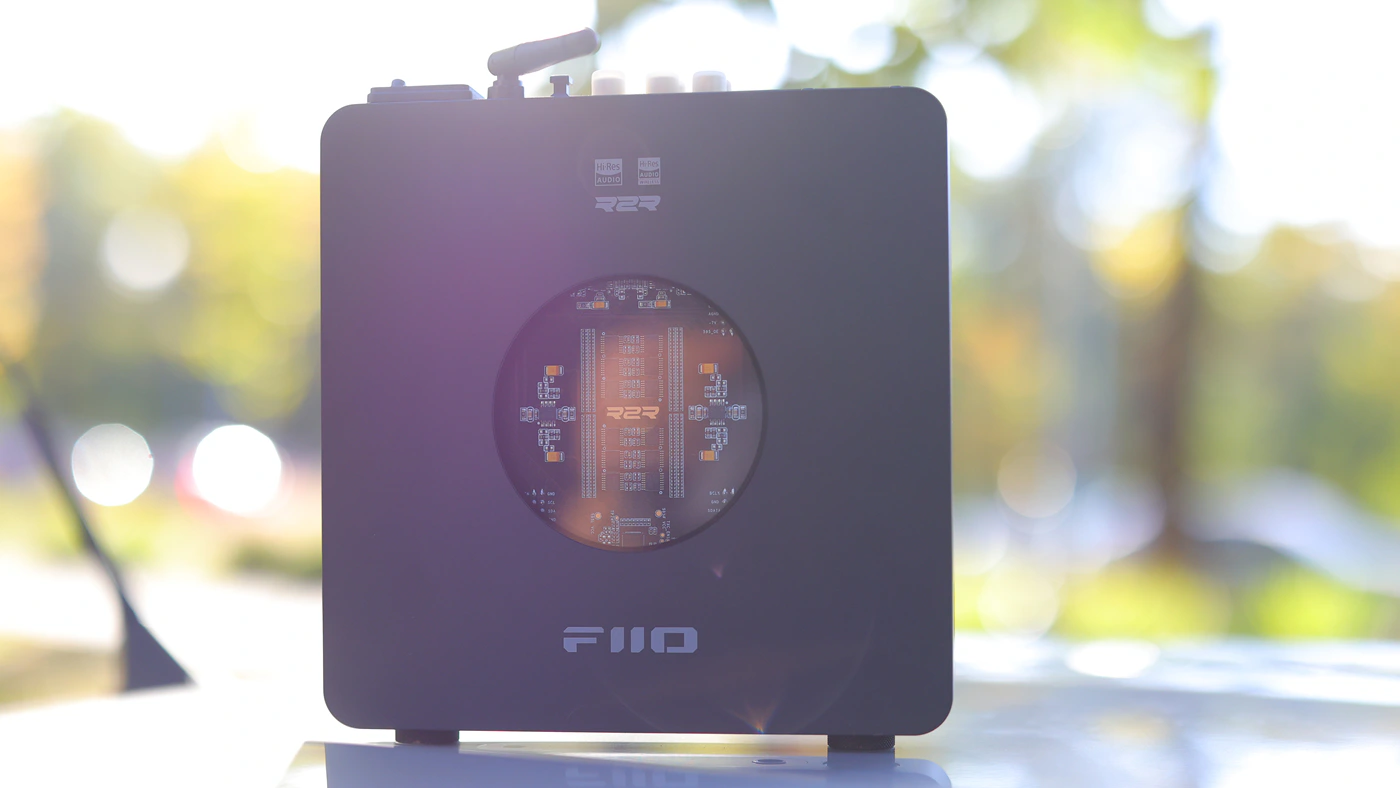
Bass – FiiO K13 reaches the low range nicely, with a ton of sub-bass power for headphones, but a neutral presentation for most of the bass, except for a slight hint of warmth in the upper bass / lower midrange. Bass is generally natural in speed in both OS and NOS modes and the two modes sound very similar. Different from most USB DAC AMPs I tested, the bass of K13 seems to be able to change character with the song more than most of the same price range, so it can speed up a bit more with fast EDM and death metal, without feeling fast with slower music. OS mode bass can have a bit more punch while NOS mode is a slightly bit softer and less punchy.

Midrange – If you’re looking for sweetness and equal presence of male and female voices, FiiO K13 delivers that really well, and it has a very similar amount of presence for both but in a different contrast between OS and NOS modes. Basically, it delivers a softer, more gentle sound in NOS mode, similar to a Lotoo PAW GT2 signature, while in OS mode, it is very similar to FiiO K17, a more energetic, punchier and more holographic sound. The trick is that in NOS mode, so pure R2R, the sound is deeper, with more definition and separation between layers, while in OS mode the sound is much wider, with better lateral scattering and spread. If you like a more dramatic, more dynamic sound, you’ll prefer OS mode, while if you want a softer, more emotional sound, NOS mode will be right up your alley.

Treble – At the top end, FiiO K13 R2R sounds extended, but can be really soft in NOS mode, and harder, more edgy in OS mode. Treble always extends nicely to the highest heavens, but it is very different in hardness and texture between OS and NOs modes, and in how forward it feels. A good extension doesn’t always imply the same level of presence and K13 R2R is clearly more present in the treble in OS mode. This being said, the difference is smaller than with most R2R DACs where one mode could be downright blunted and waxy or lack the impact, with K13 both modes are nicely balanced but with a different tuning. You cannot compensate for the differences with EQ, they are uniquely presented.
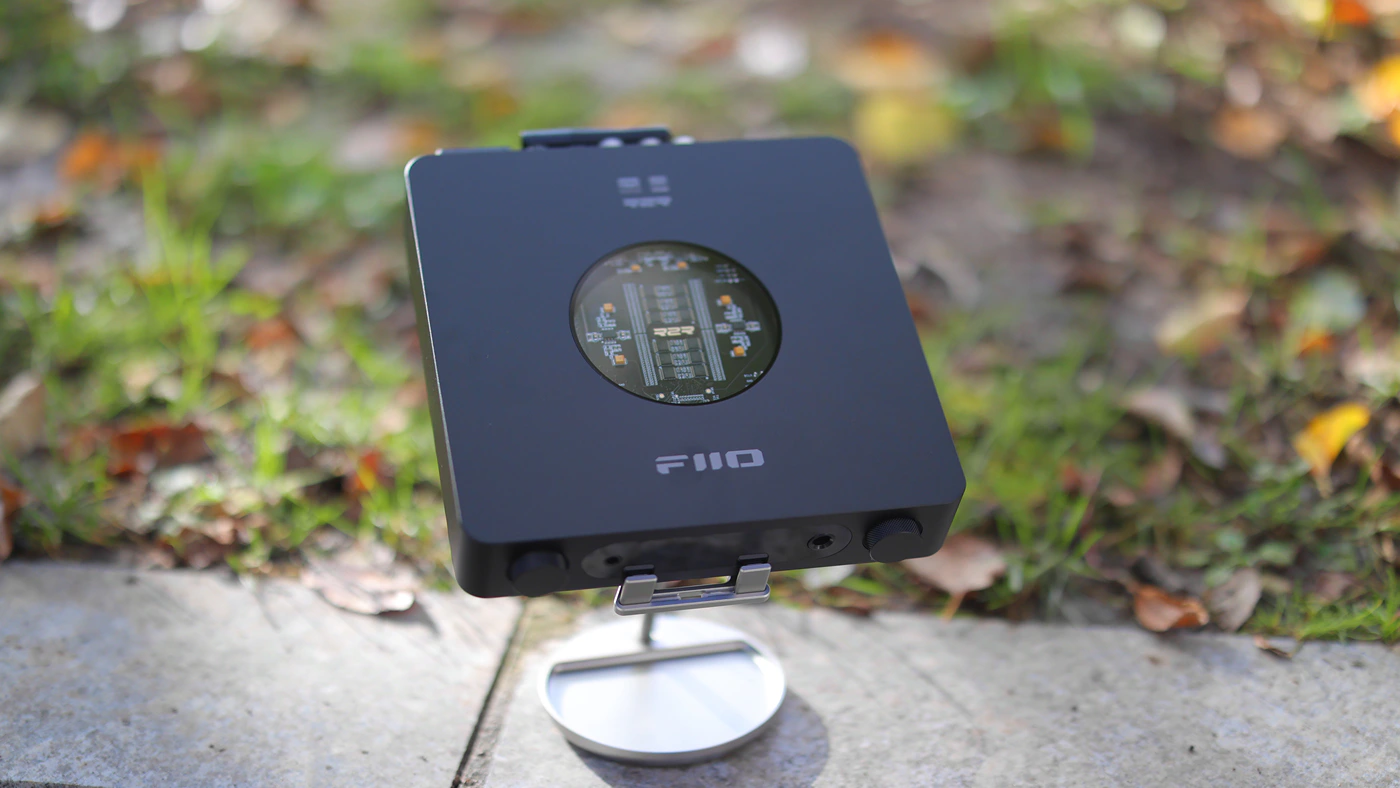
Dynamics And Textures – The largest difference between OS and NOS modes is seen in the dynamic and texture part of the sound, where OS is a bit more compressed and can feel more engaging, and it sounds much more textured, with more edge and can be more fatiguing, similar to a standard Delta sigma DAc, while NOS mode is much less textured, smoother and more gentle, while dynamics are less compressed, there’s more difference in loudness but also less contrast thanks to the more relaxed presentation.
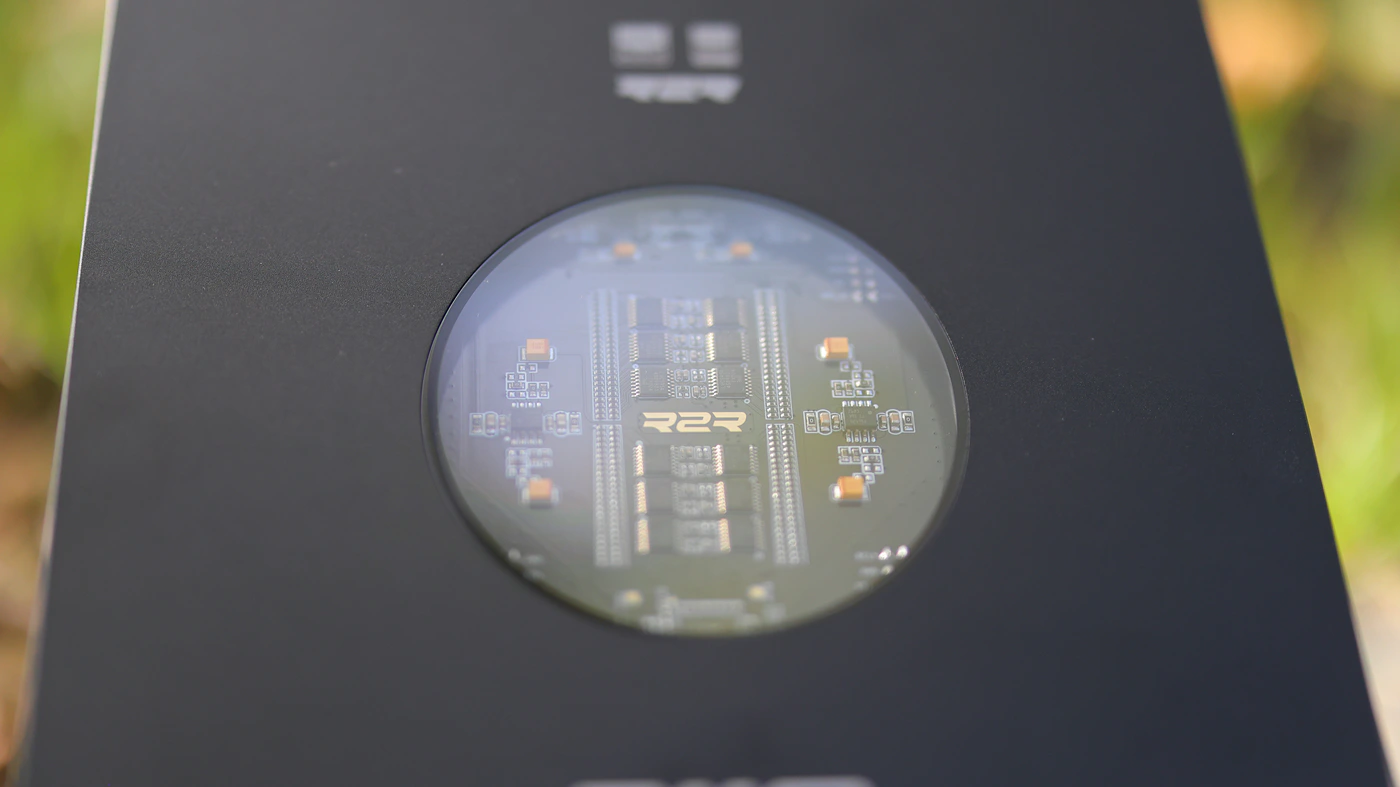
Loudness Saturation Gradient – FiiO K13 R2R is excellent at volume handling, it sounds consistent with the same signature across all volume levels, and I like bringing it very loud, as it really delivers a crisp and noise-free sound even very loud. NOS mode is better at handling extremely high volumes, but can sound more vague at low volumes, while OS mode is more consistent all across but can become more easily fatiguing at high volumes. Overall, K13 itself can handle both sensitive IEMs and hard to drive headphones really well.

Soundstage – While we have explored this in the midrange part of the review, the soundstage is also different between OS and NOs modes, in OS it is wide and holographic, laterally engaging and fun, while in NOs mode, it is very deep, more defined in how far each sound is from you, but less laterally engaging. Separation is generally very good though between instruments and K13 R2R is great at delivering an enjoyable sound in both modes.
Comparisons
FiiO K13 R2R vs HIFIMAN EF499 (319 USD vs 299 USD) – EF499 has a slightly lower price than K13 R2R, and it is also vertical, with a different design, but K13 R2R has a PRE function, while EF499 has only line out, and it can easily overdrive most AMPs and PReamplifiers. Theoretically EF499 has almost double the maximum headphone driving power compared to K13, it features gold accents, more elegant, while K13 r2R has a bit less driving power, but a lower background noise for IEMs and it looks futuristing with LED lights. Both have a cattle plug input for power, but EF499 has no option for a DC input, while K13 R2R can be powered from an LPS Linear Power supply if external. Streaming functions are great for both, but K13 R2R has Bluetooth LDAC support while EFG499 has Ethernet input and better direct streaming support.
Sonically, K13 R2R sounds a bit warmer in the lower midrange, OS and NOs modes are a bit more consistent and similar in sound, while wit EF499 OS mode is far more bright and more aggressive while NOS mode is far softer and more gentle. This means that with EF499 you can experience a more direct comparison between OS and NOS, while with K13 R2R you get two enjoyable flavors for your sound. EF499 is more mid centric for voices, it has more overdrive and a stronger drive factor, and it can overdrive more quickly, while K13 R2R is more controlled and more balanced. Bass of the EF499 is slower and treble is a bit softer, while K13 R2R is more faithful to the original recording.
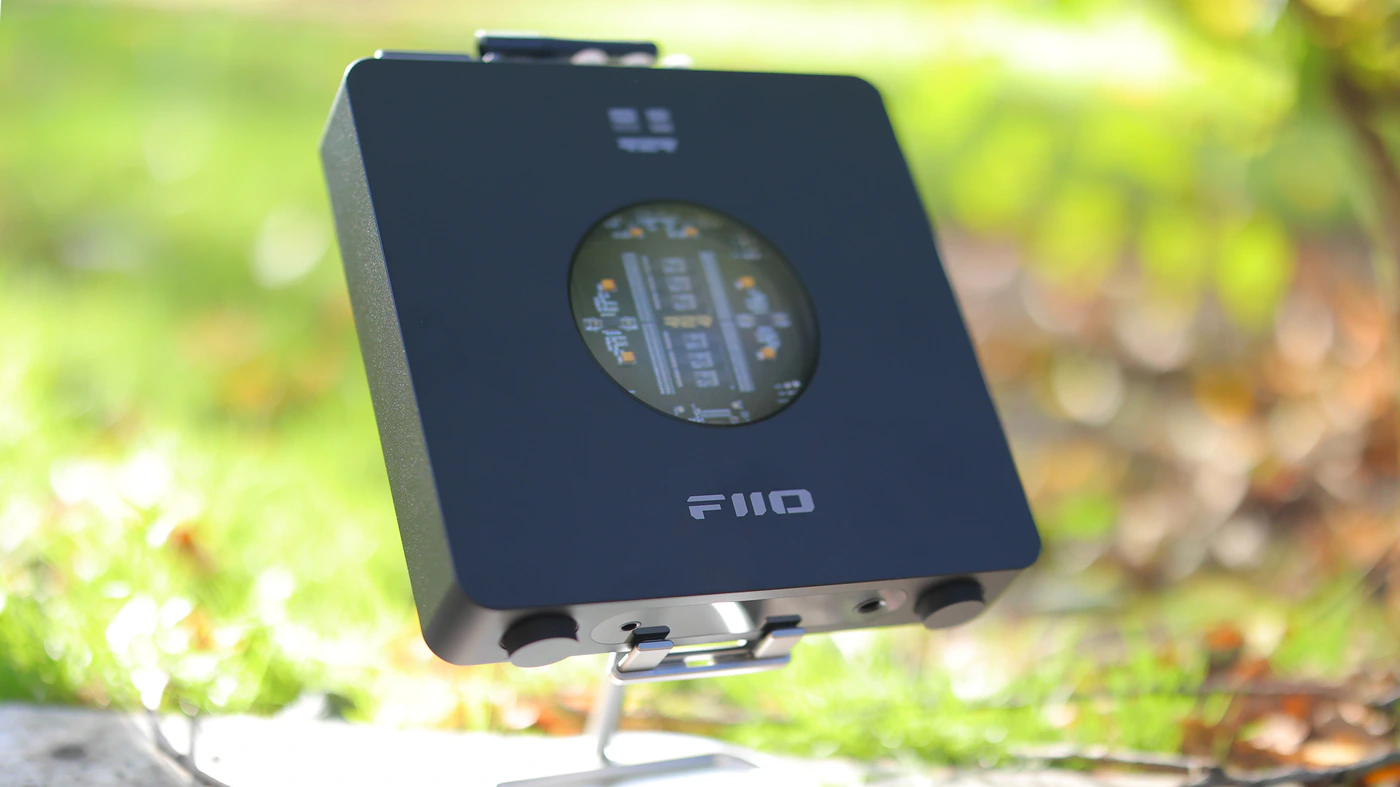
FiiO K13 R2R vs Shanling EH2 (319 USD vs 369 USD) – Shanling EH2 is a more forward flat sitting devices, it has buttons for control instead of a display and wheel, it has very obvious bass and treble wheels that you feel more confident to use than the digital EQ profiling of K13 R2R. This being said, the EQ of K13 is far more precise, offers more fine tuning and for most users you can squeeze more performance using it. EH2 has an analog volume wheel while K13 has a digital controller. K13 R2R offers XLR Line Out and PRE out, while EH2 offers only RCA and 4.4mm balanced PRE or Line out. EH2 also has OS and NOs modes, but the switch is uncomfortably ad the back. EH2 has no internal PSU so it cannot accept AC only DC power input and it uses an external power brick, but it has a similar input compared to K13, except that it has just one USB Type-C input, and a BT antenna, no Ethernet. They are comparable, and K13 offers more advanced features in the same style as EH2.
Sonically, EH2 has extremely distinct signatures between OS and NOs, it can be very detailed and clean, powerful and revealing in OS mode and really soft and a bit vague and high in distortions in NOS mode, as I pointed out in my review of it. K13 R2R is similar between modes and enjoyable in both modes, and enjoyable in both, a bit more lateral and enjoyable in OS, or softer and more emotional in NOS modes. Generally, K13 R2R is more versatile and more balanced and less extreme.

FiiO K13 R2R vs Topping DX5 II (319 USD vs 299 USD) – K13 R2R is similar to Topping DX5II in function, and DX5II offers three headphone outputs, one more than K13 R2R, but also has a little display. At the back, Dx5II has both XLR and RCA line outs with PRE functions, but no ethernet and instead of a type-C usb input, it has a Type-A input,which means that you need cables for that, but DX5 II has 12 V trigger in and out, which K13 R2R does not have. DX5II has only AC input and no option for using an external linear power supply. The color scheme of DX5 II is interesting, but it doesn’t come close to how interesting K13 R2R looks with the transparent top.
Sonically, DX5 II sounds more warm and less detailed than K13 R2R, which is far more detailed, has a more revealing sound, and for the same price, K13 R2R feels more personal, while DX5 II sounds natural, balanced and has a high impact. The point here is that DX5 II sounds fun and clean, wide and holographic, just like K13 R2R but K13 brings in two distinct sonic modes, and DX5 II falls somewhere in between the two modes of K13.
Value and Conclusion
FiiO K13 R2R has an outstanding price to performance ratio, it is an entry-level DAC Headphone AMP, it delivers about as much power and a similar sound when compared to FiiO K17, while costing less than half of it. I still consider it worthy to get K17 if you have a top flagship pair of headphones like HIFIMAN Susvara Unveiled, but K13 R2R is outstanding from a price / performance ratio, having the best value out of everything FiiO released this year, including K15 from a technical perspective.
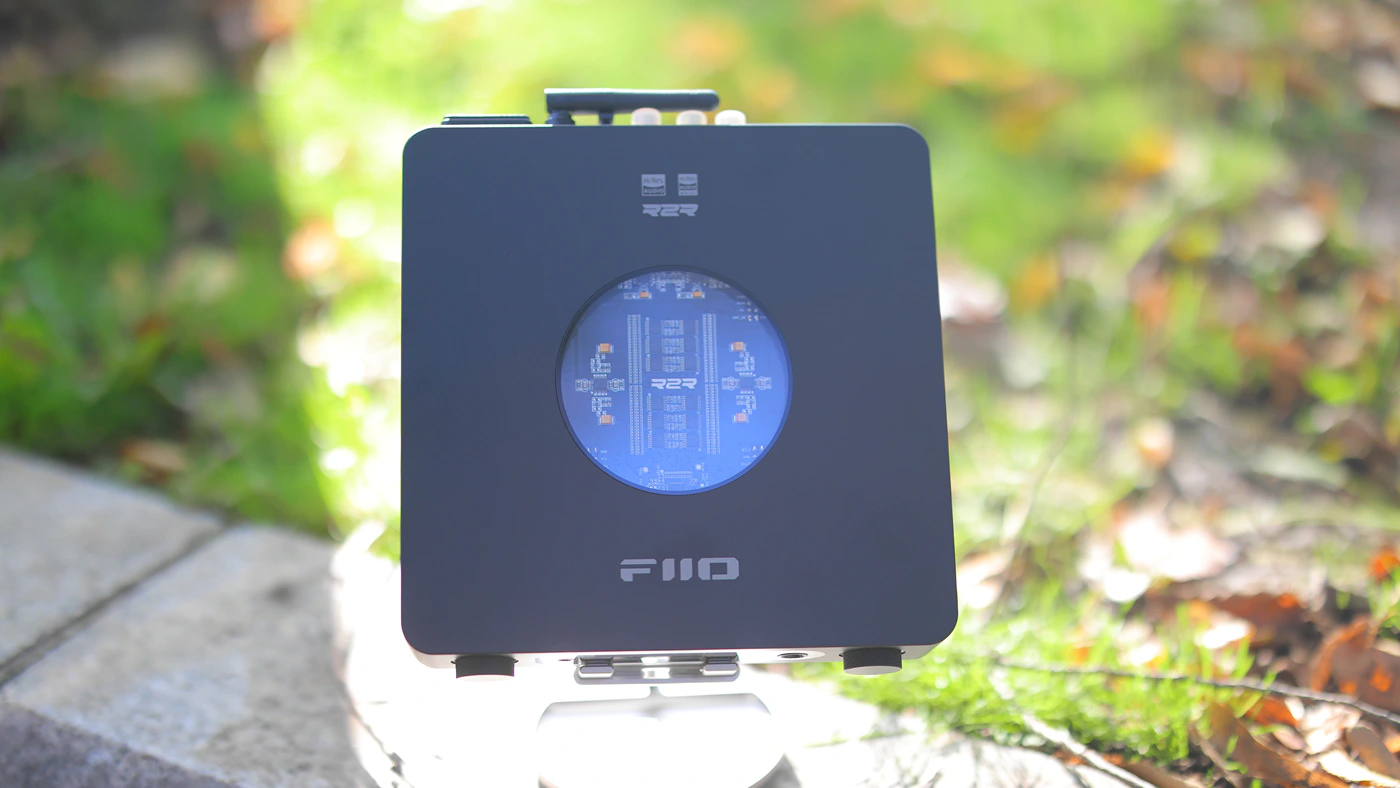
At the end of the day, FiiO K13 is a fun and dynamic sounding DAC Headphone AMP with excellent dynamic range, a slightly warm, but mostly neutral signature, it offers the listener a holographic sound with both NOS and OS modes, and it is one of the few DAC AMPs in the whole world where I can say that I’ve enjoyed the NOS mode as much as OS mode.

PROs
- Really awesome design, love seeing the R2R DACs lit up by LED lights
- Futuristic but useful design
- Two headphone outputs, both 4.4mm balanced and 6.3 single ended
- XLR PRE and LO at the back
- Two USB Type-C inputs
- RCA Line Out / PRE is included
- No audible USB DAC delay
- Dynamic, engaging sound
- Both OS and NOs modes are super enjoyable, FiiO’s unique design sounds great
- Price / Performance ratio is simply outstanding
- EQ functions
- Bluetooth included with LDAC support
Cons
- Different from previous FiiO DAC AMPs, for K13 high gain sounds better than low gain with most headphones and IEMs
Product Link
Amazon – https://amzn.to/4ogFg6g
Aliexpress – https://s.click.aliexpress.com/e/_c2Jhss3p
--- Please remember to stay safe, and always have fun while listening to music!---
- If you have a dime to spare, please donate, and help us! It would make the day brighter for me and my wife-
Full Playlist used for this review
We listened to more songs than those named in this playlist, but those are excellent for identifying a sonic signature. I recommend trying most of the songs from this playlist, especially if you’re searching for new music! The playlists are different for Spotify, Tidal and Youtube, and based on the songs I enjoy and are available on each!
https://www.youtube.com/playlist?list=PL_cjBXGmwSHSdGcwuc_bKbBDGHL4QvYBu
https://open.spotify.com/playlist/5J3oloz8Riy9LxEGenOjQ0?si=979ba4f082414be7
https://tidal.com/browse/playlist/330fd544-8e5b-4839-bd35-676b2edbb3d5
--- Contact Us ---





